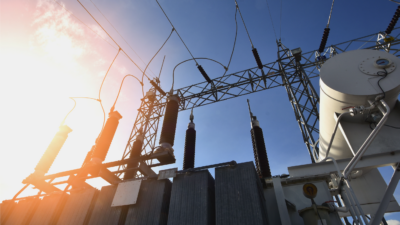Battery recycling won’t solve all our problems. For true sustainability, we need batteries that last far longer.
All eyes are on the battery, as it’s the fundamental component of virtually every power system on the planet today. With the increasing availability of government tax credits for the electrification of transportation, power generation and other sectors, the demand for batteries is expected to increase as decarbonization programs are adopted more widely.
Driving this trend are consumers, who require reliable batteries for all their electronics, including smartphones, home automation products and entertainment devices, in addition to micromobility vehicles like e-bikes and scooters.
The battery market is evolving to meet these fast-growing energy storage needs. However, with growth comes a challenge resembling the fast fashion industry’s notorious throwaway culture. But as consumers purchase garments to wear only a handful of times and then throw them away, Americans can’t simply throw away the highly popular lithium-ion (Li-ion) batteries that dominate the market today. In fact, according to the Environmental Protection Agency (EPA), Li-ion batteries and devices containing these batteries should not go in household garbage or recycling bins at all, as they can cause fires during transport or at landfills and recyclers. As such, the industry must reevaluate our battery culture and the education around it.
Our production, short-term use and disposal of batteries at an increasingly rapid pace should tell us that we are now living in a “fast fashion” era of batteries. Unfortunately, this is often at the expense of long-term sustainability and environmental considerations. While there are similarities to the fashion industry mass-producing disposable, inexpensive clothing intended for short-term use, the energy storage industry has also been witnessing the proliferation and rapid production of batteries with limited lifespans.
We have a battery waste problem on our hands, and we need to solve it.
Recycling is only a short-term solution
One popular idea would be to incorporate the benefits of a circular economy, which involves the recycling and reusing of materials, including the components found in batteries.
However, it would be more effective to go even deeper, and prevent the need to recycle a battery in the first place. The concept would be similar to a solution for fast fashion: produce less clothing, so as to reduce the need to recycle that clothing.
Battery-making is complex and “dirty.” Most lithium-ion batteries today are sourced from hard rock mines or subterranean brine reservoirs. Beyond the difficulty of sourcing, a significant portion of the energy needed to extract and process the minerals is derived from fossil fuels emitting CO2. In hard rock mining, the extraction of each metric ton of lithium releases 15 metric tons of CO2 into the atmosphere, according to sustainability consultant Minviro.
There’s no sign of the situation slowing down anytime soon. According to the World Bank, the production of battery-critical minerals, including lithium, could go up by as much as 500% by 2050 in order to meet renewable energy targets.
Recycling can certainly work to reduce the environmental impact of battery waste. However, the industry needs to explore additional solutions that aim to significantly reduce or postpone the prospect of having to recycle in the first place.
A more attractive option is to use longer-lasting batteries.
A look at longer battery lifespans
While recycling helps address battery waste, a better solution would be to use longer-lasting batteries—thereby reducing the need to recycle at all.
Extending the lifespan of batteries helps address our battery throwaway culture and the associated environmental effects. Longer-lasting batteries, such as lithium-titanate (LTO) batteries, significantly reduce the environmental footprint of batteries, because fewer batteries of this type would be disposed of. People would replace their batteries much less frequently, which helps drive down the overall environmental impact associated with battery resource consumption, production and disposal.
Another important aspect of longer battery life is resource conservation. By prolonging the life of batteries, we help conserve precious, finite resources. Aluminum, lithium, nickel, cobalt, manganese and graphite have been classified as critical minerals by the United States Geological Survey since 2022. Indeed, these resources are increasingly vital to national security and the U.S. economy.
Another benefit of longer-lasting batteries is the longer life of the devices running on those batteries. Longer-lasting batteries extend the useful life of electronics, reducing turnover and the waste generated from worn, unwanted, outdated or discarded devices. Consumers benefit too, as more expensive products become more cost-effective over time. In critical applications like medical devices or emergency equipment, longer-lasting batteries reduce disruptions and increase patient safety.
While recycling efforts and longer-lasting batteries contribute to putting the brakes on our current battery throwaway culture, additional innovations are needed to shape a more sustainable and efficient battery future.
—
Charlie Welch is the CEO and Co-founder of ZapBatt, a battery provider for various markets, including mobility, small infrastructure, and consumer products. As an aerospace engineer, Charlie Welch was a lead researcher at defense and technology companies testing and optimizing a variety of battery chemistries.



